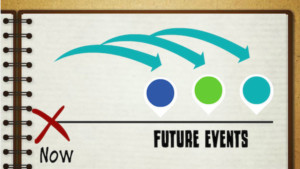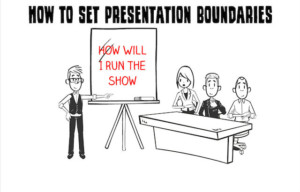“I have a big presentation coming up…What do I say?”
“Where do I start?”
I hear this statement-question a lot.
The question part stems from a sense of overwhelm about the presentation process and is usually one question hiding many issues in the background.
If unpacked then the question might be:
What should I say? Who am I speaking to?
What do I want them to take away? How do I start? How do I finish?
Who is going to be there? Can I pull it off? Will they believe me?
How can I make it interesting?
And a million other questions firing up in the brain causing the sense of overwhelm….
The good news is that Stand Up comedians have struggled with the same issues for a long time and figured out a system. The system helps them create great content that gets the job done quickly.
I came across this system when I studied stand-up comedy. I got into stand up to improve my sense of humor as a speaker, but I got more than just that; I got a system that helps me create great presentations faster and better than anything I’ve seen before.
Introducing The Bit-System
If you listen to stand-up comedians, you will probably hear them say something like “That was a great bit.” What they are referring to is a stand-alone chunk of information that they created, tested, and refined. This bit fits with other bits to make up the comedian’s show (presentation).
Comedians don’t wake up one day and download on a piece of paper a list of jokes and wa-lah, They are ready for HBO!
It takes them time and effort to develop each bit at a time. A comedian gets an idea to make people laugh. He takes this idea and tests it on friends in a one-on-one setting. If the idea has some merit, the comedian will develop it.
Then, it will be tested in a club to observe the audience’s reaction. In the case of positive response, it will be incorporated into the act. If it doesn’t seem to be funny, the comedian will work on this bit more or just throw away this idea entirely.
Comedians are known for their humor, but their system is not a joke. It works and produces content for the toughest environments to present in. This system is as agile as you can get regarding development.
BTW – A similar system is used with Agile Software Development, but instead of bits, they call the smaller chunks of development sprints – now back to the article
With minor tweaks, you can create powerful and efficient presentations using the same system.
How to apply the Bit-System to presentations
You can use the system used by comedians to build your presentation following these five steps. If you need more in-depth training on this, then check out the Magnetic Blueprint Bootcamp (in the bootcamp we break the process into the nuts and bolts, and you walk away with the complete system).
1- Set a goal
2- Test an idea or a seed
3- Create a bit and test it
4- Repeat step 3 until complete
5- Create presentations like Lego
1 – Set a goal
Every presentation must have a goal. For standup comedy the goal is always the same: make people laugh. For you, the goal varies per presentation. Sometimes it’s to get support, at times it’s to get approval, and sometimes it’s to get funding.
If you keep the goal in mind, you will know what Bits to choose and what Bits to drop. If you neglect to set the end-goal while developing your bits, you will risk creating a fragmented presentation that does not make any sense.
Having a clear goal for each of your presentations will get you focused, therefore becoming clearer and more precise.
2 – Test an idea (Your seed)
Once you have the goal down, it’s time to start creating your content. It all starts with a seed.
Think of one idea, one data set, one theme, or one story and run it by someone you know. Tell them what your goal is first, then tell them the idea and third see what they say. Get multiple opinions. This will help you develop the first bit and will give you a clue of what other bits you need in the presentation.
Once you have a valued seed, it’s time to build your first bit.
3 – Create the first bit and test it
A seed is an underdeveloped bit. Take your seed and develop it further by adding data, examples, metaphors, and stories to it. Don’t be afraid to combine multiple ideas or seeds into one bit – that’s fine.
Keep testing your bit as it develops. Two ways to check it: one is to run it by someone you trust. Two is to say it out loud and listen to how it sounds.
Once you test it a couple of times, it’s time to create the other bits you need for the presentation.
4 – Repeat until complete
Just repeat the previous steps until you have all your bits. Remember to keep going back to the goal and make sure that each bit supports somehow the goal. Of course, collectively; all your Bits will make a solid case for the goal.
Once you have all the bits, it’s time to assemble them into a complete whole.
5 – Create presentations like Lego
Once you build your presentations using the Bit-System, your presentations will feel like pieces of Lego. You can break them apart, rearrange them, and put them back together how you want.
The most important part is that you can take a Bit out and swap it for another any time you see fit.
Bye-Bye Old System – Hello new world
We are taught to build presentations using a 2500-year-old system that was invented by the ancient Greeks. It’s a good system, and it has its applications, but it does not work well in modern times.
Our modern presentations need to be more dynamic, more robust, and more adaptable – that’s where the Bit-System shines.


